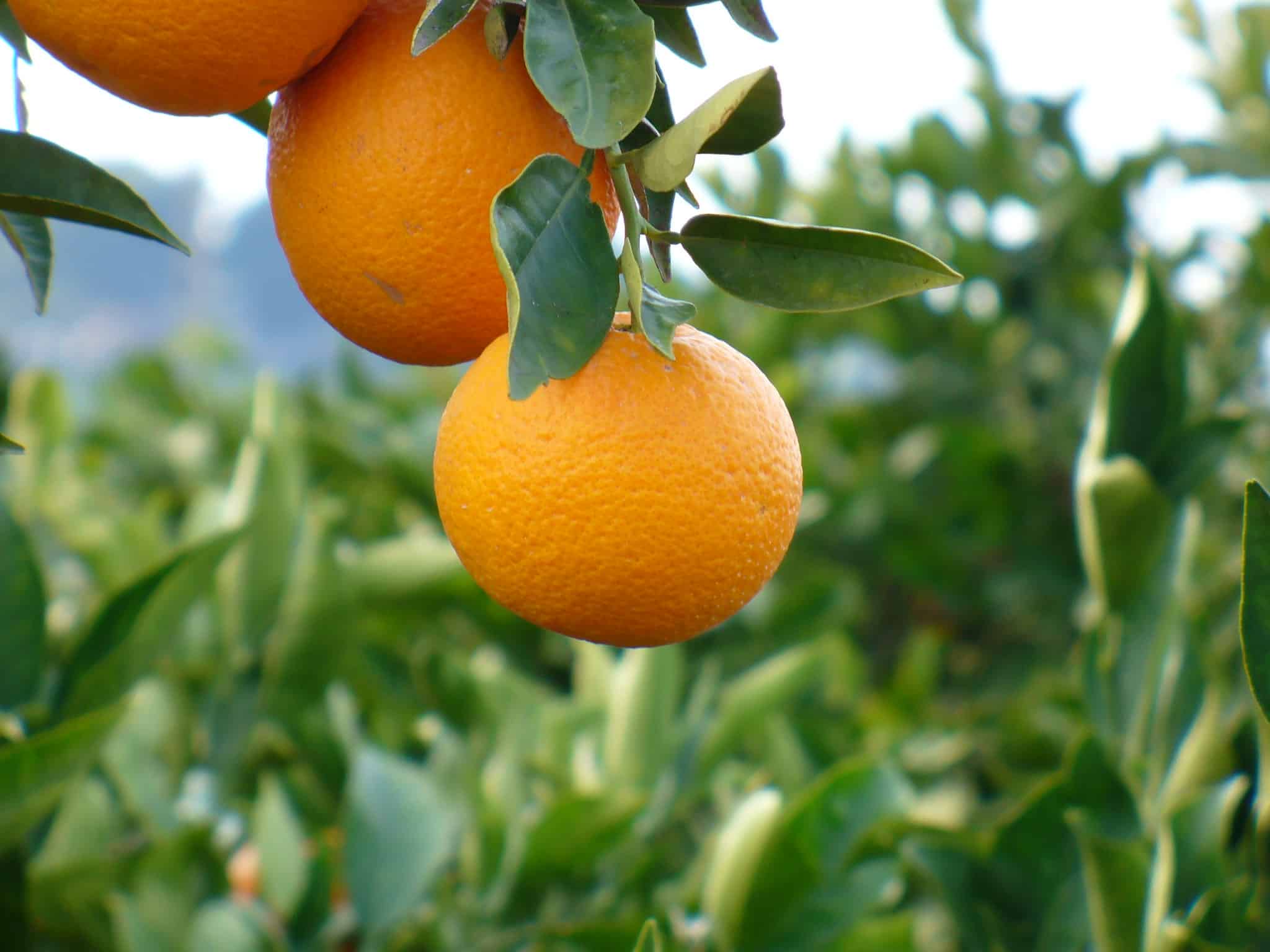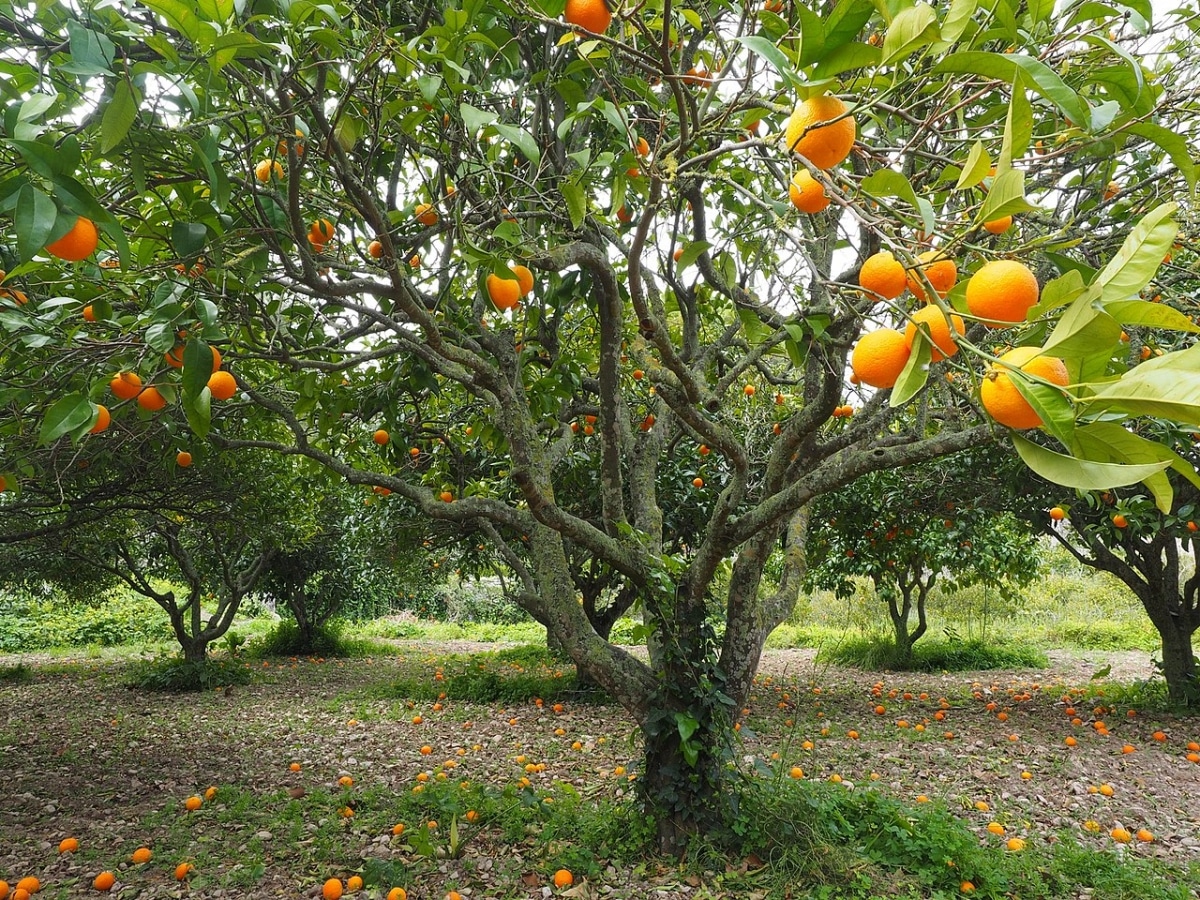
Image – Flickr/Manel
The orange tree is a tree that is widely planted in orchards, as well as in large and small gardens. It is a plant that is not only pretty, but also useful as it casts a cool shade, and produces many fruits in spring. But although it is well known, the question may arise as to whether it is perennial or deciduous; that is, if it remains evergreen or if, on the contrary, it loses its leaves at some time of the year.
Why can this happen? Well, for various reasons: low temperatures, pests, or simple ignorance. So If you are wondering if the orange tree is deciduous or perennial, we are going to solve the doubt.
Is it evergreen or deciduous?

Image – Wikimedia/Hans Braxmeier
The orange tree does not need to lose its leaves in their places of origin, so it is evergreen by nature. This is so because the cell walls of such leaves are tough enough to withstand the cold and the occasional snow. For this reason, it behaves like this in regions with a warm climate, such as the subtropical (including the Mediterranean).
But things can change a lot if it is grown in an area where, on the contrary, snowfalls are recurrent, since yes, it can withstand sub-zero temperatures, but only up to a certain point. In fact, should not be left unprotected if the thermometer reads less than -7ºC, and even less if it is a tree that is already flowering since otherwise it will lose those flowers.
In what cases can the orange tree look like a deciduous tree?
I have told you about the cold, the snow and so on, but it is not the only reason. For this reason, I consider it important that you know why an orange tree can lose its leaves and what you should do about it:
Extreme temperatures (hot/cold)

Image - Wikimedia / Emőke Dénes
Every living being performs its vital functions in a certain range of temperatures; even humans feel more comfortable in one climate than in another (and therefore, we also say that some of us are chilly and others are hot). Exactly the same thing happens with orange: you will see it grow as long as temperatures stay between 15 and 30ºC, but if they go below 15ºC or rise above 30ºC, that growth will slow down.
But there is still more. We also need to talk about temperatures that can be life threatening. For example, in the case of humans, if it rises to 41ºC and we don't drink water, we would have serious problems (headaches or irritability for example), and if it continues to rise... our lives would be in serious danger. In the case of the orange tree, something similar would happen: can withstand temperatures of 40ºC but only if you stay hydrated; and even so, you will feel much better if you do not exceed 35ºC.
If we go to the other extreme, we have said before that withstands frost, but only up to -7ºC and if it is punctual. This means that it can withstand a frost of up to -7ºC during that winter, and only if it then rises above 0ºC. Likewise, it is important to add that the orange tree resumes its growth as soon as the temperatures begin to rise, so if there are late frosts, it will suffer damagesuch as premature leaf drop.
Lack or excess of water
It is not an aquatic tree, but it is not a dry one either. In fact, an orange tree that is planted in the ground, may need water every day if the temperatures are very high. Of course, that water can come from groundwater, from rain and of course also from irrigation. But what happens when you receive more than you require? Then the roots are drowned and the leaves begin to fall.
And if, on the contrary, the plant is going thirsty, the leaves will also end up falling, since the roots, not finding enough water for themselves or for the rest of the tree, will dry up. The question is, How to know if the orange tree is receiving a lot or little water? Well, in the first case, we will see that the first leaves to turn ugly will be the oldest, and in the second, instead, they will be the newest.
In addition, there are other symptoms or signs that will make us suspect that an orange tree is thirsty or, on the contrary, is drowning, for example:
- if you are thirsty: the earth is very dry, maybe even cracked. The leaves will fold to prevent water loss, and some pests such as mealybugs may also appear.
- If you're drowning: the earth will look very humid, and fungi (mold) can appear both on the leaves and on any other part of the tree.
How to solve it? In the event that it is thirsty, what will have to be done is to pour water until the earth is well soaked; and in the event that it has received too much water, it will be very important to apply a fungicide (for sale here) and suspend watering until the soil dries out a bit.
Pests

Image – Wikimedia/harum.koh // Aphids
There are several pests that can cause the orange tree to lose its leaves prematurely, such as mealybugs or aphids. These appear in spring and, above all, in summer, since they love good weather. The problem is that they multiply so fast that, if we get confused, they can colonize all the leaves of the fruit tree.
Therefore, I advise having a magnifying glass on hand, or downloading a mobile application that serves to identify pests, such as Plantix which is available for Android mobiles. Once we know what the plague is, we can combat it. Now, if you want to treat your orange tree with ecological remedies that work, I advise you to apply diatomaceous earth (for sale here), since it is a natural product that eliminates a wide variety of pests.
In summary, the orange tree is an evergreen tree, but if it is subjected to a lot of stress (due to lack or excess of water, cold / heat or pests), it could appear deciduous.